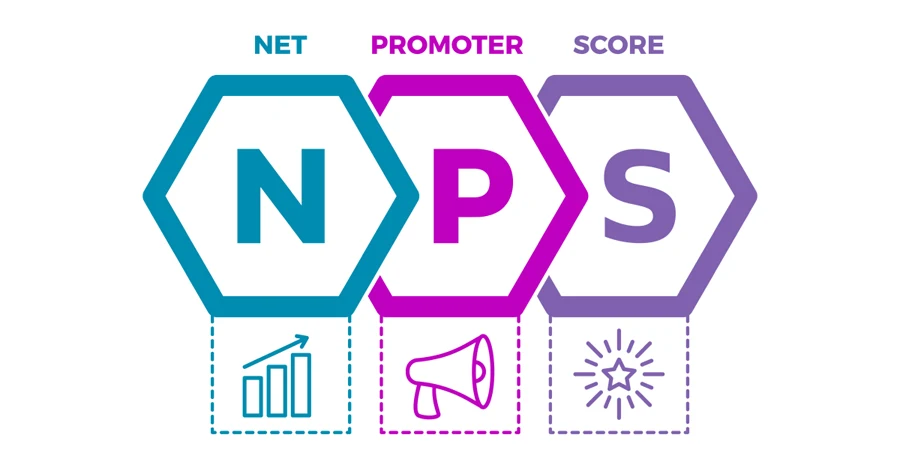Table of Contents
1. How to choose the most profitable product to sell online?
2. Most profitable products to sell online
3. Summary
Many businesses struggle to find the most profitable products to sell online. They look for commodities that resonate with their target market and are also in constant demand.
However, the fear of market saturation, intense competition, and rapidly changing consumer trends can prevent even the most ambitious entrepreneurs from making bold moves.
Stuck in this cycle of indecision, businesses watch potential profits slip through their fingers, and competitors seize the market.
But what if you had a curated list of products that could attract customers and generate substantial revenue?
In this article, we’ll explore 20+ high-demand and most profitable items to sell online in 2024.
By knowing which products are trending and understanding market opportunities, you can break free from the cycle of indecision and strategically position your business for growth. Read on to discover these top products and market opportunities.
- If you’re ready to start your business, these guides can help you take the next steps:
- Choose a platform: The 10 best ecommerce platforms in 2024 [reviews]
- Create a store: How to make a website from scratch: Ecommerce beginners’ guide
- Start getting sales: How to sell online in 2024: The definitive guide
How to choose the most profitable product to sell online?
To identify the most profitable products to sell online, you must understand what makes them valuable. A product with the potential to drive sales often ticks the following boxes:
- Solves a specific problem: A product that addresses a consumer’s pain point tends to attract buyers. Think of products that meet a need or fill a gap in the market
- Provides a healthy profit margin: Choose a product offering substantial earning potential. This means the cost of producing or sourcing the product should be low enough to allow a significant markup
- Has a strong growing demand: Look for products with increasing popularity. They indicate a stable market and the potential for long-term sales
- Offers potential for upsell or cross-sell: Profitable products allow expanded customer purchases beyond the initial item they want to purchase. This means you can offer complementary products or premium versions to increase the average order value
- Has plenty of reliable suppliers: When choosing a product, consider those with a reliable supply network. This way, you’ll be able to meet customer demand
Don’t get into selling a product you don’t understand. Go for a product you’re knowledgeable about or have a genuine interest in. You’ll be more motivated to research the market, optimize listings, and provide exceptional customer service — all of which are crucial for long-term profitability.
Evaldas Mockus, VP of Growth at Omnisend
Most profitable products to sell online
Let’s explore a range of trending and most profitable products to sell online that resonate with consumers in 2024:
1. Loop earplugs
Market size: $1.3 billion in 2023 (global)
Item price range: $24.95 – $59.95
Approximate net profit margin: 40%
Loop Earplugs are designed for noise reduction and ear protection. They come in various shapes, colors, and sizes to fit different ear canals. Some loop earplugs offer multiple noise-canceling levels, which make them suitable for various environments, from sleeping to traveling.
Earplugs can be a profitable product to sell online as they’ve seen significant growth in recent years. Industry research indicates that the global earplug market was valued at US$ 1.1 billion in 2022 and is expected to show a growth rate of 4.6% from 2023 to 2031. Online sellers can benefit from this trend, with potential gross profit margins of up to 40%.
Pros
- High demand driven by health and lifestyle trends
- Good profit margins due to premium pricing
- Diverse consumer base, including musicians, travelers, and industrial workers
Cons
- Requires substantial investment in marketing and branding to stand out
An example of this product is the stylish earplug by Loop. These earplugs are available in various colors, including Raving Red and Glorious Gold, resembling ear jewelry when worn:
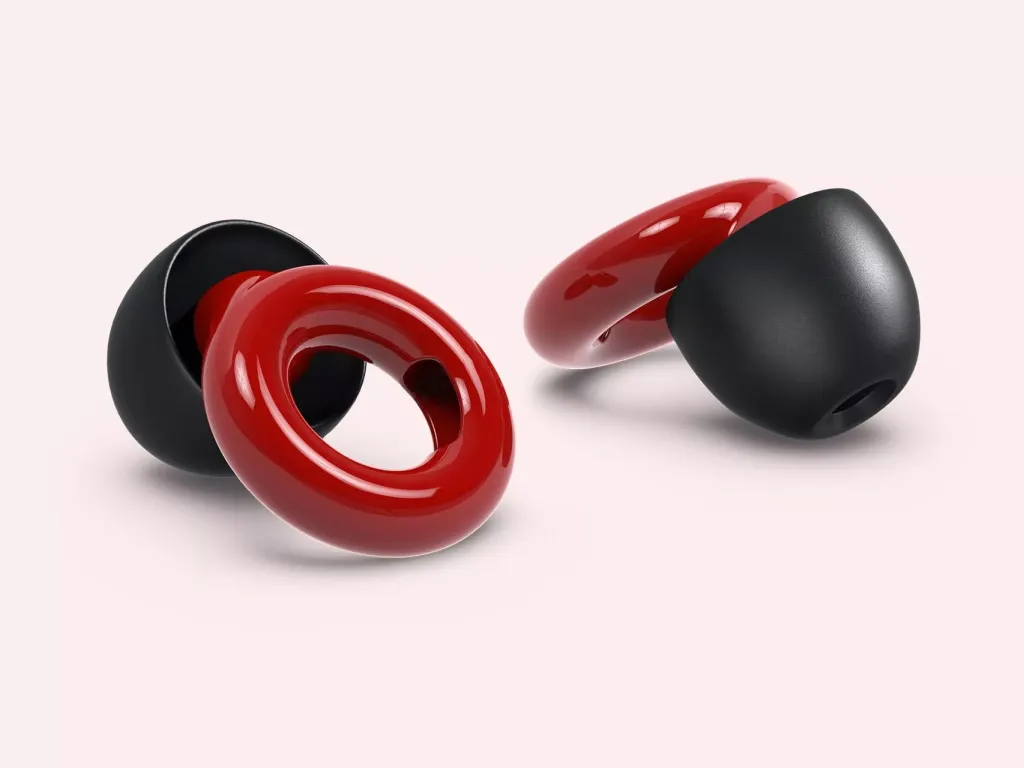
2. Protein supplements
Market size: $26.10 billion in 2023 (global)
Item price range: $17 – $110
Approximate net profit margin: 30%
Protein supplements are another of the most profitable products to sell online. They’re concentrated sources of protein that are often in powder form but also available as bars, shakes, and other convenient forms.
Why sell protein supplements online? The global protein supplement market is thriving, valued at $26.10 billion in 2023. This number is projected to grow at a CAGR of 8.81% to reach $55.32 billion by 2032. As awareness of maintaining an active lifestyle grows, the demand for protein supplements has surged.
This product can have a substantial profit margin. Industry experts estimate that the net profit margin for protein supplements can range from 25% to 40%. This makes it an attractive product category for online sellers.
Pros
- High demand from fitness and health-conscious consumers
- Diverse product range appealing to different dietary preferences
- Attractive profit margin
Cons
- Strict regulatory compliance requirement
- Fluctuating prices of raw materials
For example, Optimum Nutrition’s Gold Standard 100% Whey Protein Powder is a popular protein supplement available in varied flavors and sizes. It features a blend rich in naturally occurring BCAAs essential for muscle growth and repair.
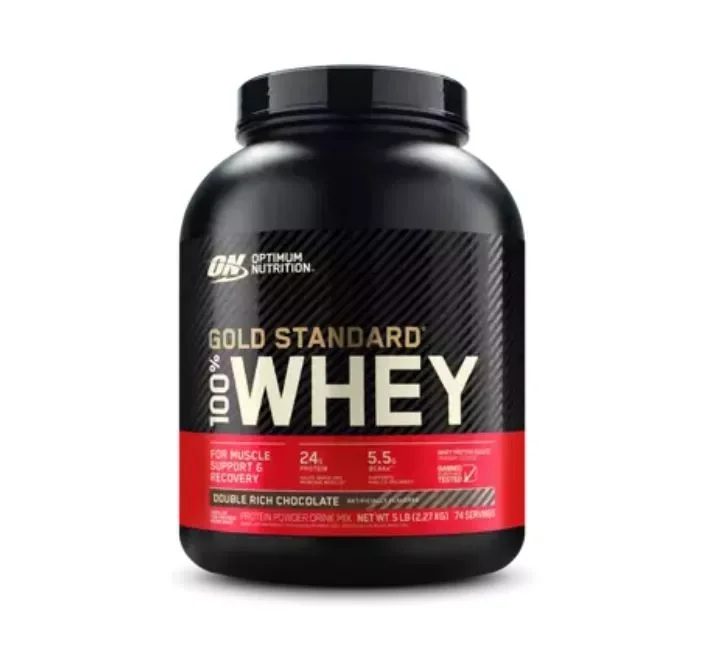
3. Men’s wellness products
Market size: $1.27 trillion in 2023 (global)
Item price range: $10 – $1,000+
Approximate net profit margin: 15 – 30%
These products are designed to support men’s physical and mental health. They include vitamins and supplements for prostate health, energy levels, and stress management. They also include skincare products, grooming tools, and sleep aids targeted specifically for men.
Selling men’s wellness products online is a lucrative opportunity. The market is growing rapidly, with men turning to ecommerce platforms for convenience and discreet shopping.
The global men’s health and wellness market, valued at $1.27 trillion in 2023, is expected to reach $2.57 trillion by 2029. Due to the increasing demand for these products, businesses can expect to gain a profit margin as high as 30% by selling them online.
Pros
- Ability to target a niche market with specialized products
- Offer a wide range of items to cater to different needs and preferences
Cons
- The market is competitive with many established brands
An example of a product in this category is the beard care kit by Buddy’s Beard Care. This is a comprehensive kit with beard oil, balm, wash, and a comb — all formulated specifically for men’s facial hair:

4. Skincare products
Market size: $146.7 billion in 2024 (global)
Item price range: $20 – $300+
Approximate net profit margin: 15 – 30%
These in-demand products help support skin health, enhance appearance, and manage skin conditions. The skincare market includes several product types: cleansers, moisturizers, creams, serums, sunscreens, exfoliants, and more.
Selling skincare products online can be profitable because of growing consumer awareness and focus on skin health. In 2023, the global skincare market reached a value of $109.71 billion. Experts predict this figure to reach $194.05 billion by 2032. With a profit margin of up to 30%, skincare products are among the most profitable products to sell online.
Pros
- A wide range of products to target diverse consumer needs
- High profit potential
Cons
- Challenges in maintaining product quality
One example of a popular skincare product is the Cetaphil Daily Facial Cleanser. This product is formulated to gently cleanse and hydrate the skin without stripping its natural oils. It’s suitable for all skin types and retailing for around $15 per 16-ounce bottle:
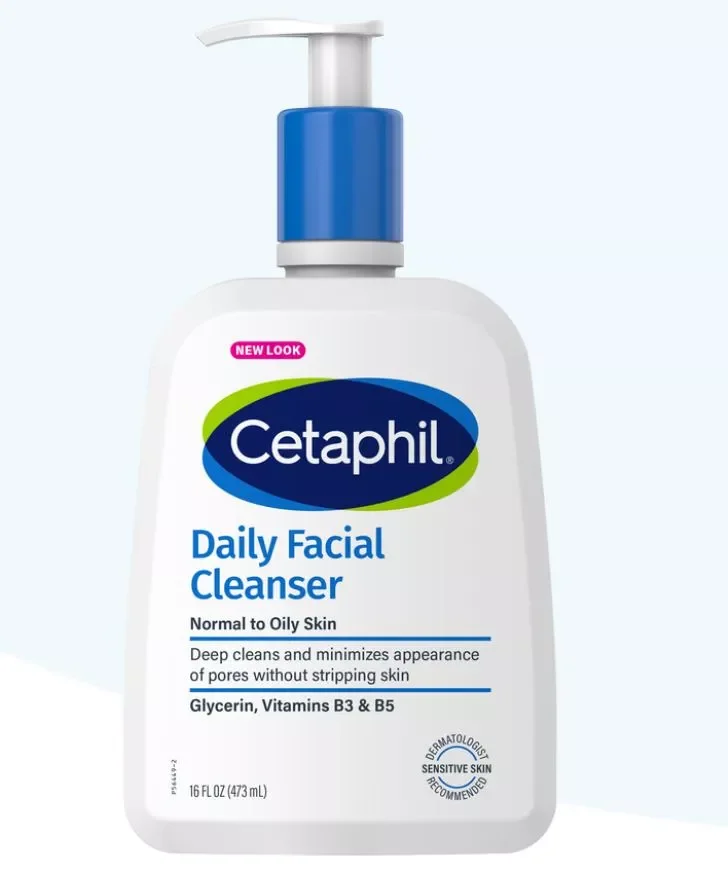
Related:
10 skincare email examples that truly capture attention
5. Equestrian apparel
Market size: $6.49 billion in 2023 (global)
Item price range: $50 (basic items) – $500+ (high-end pieces)
Approximate net profit margin: 10 – 40%
Equestrian apparel is specialized clothing and accessories designed for horseback riding and related activities. These include items like riding jackets, breeches, boots, helmets, gloves, and other protective gear. These products are tailored to provide comfort and performance enhancement for riders engaged in equestrian sports.
The equestrian apparel market is expanding, with increasing interest in leisure sports and technological advancements. Experts predict the market to be valued at $9.45 billion by 2030, indicating room for growth. Gross profit margins can be substantial, with some high-end products yielding margins as high as 40%.
Pros
- Increasing demand for high-quality, fashionable riding gear
- Equestrian apparel can be priced at a premium, which means you can earn healthy profits on each sale
Cons
- The market can be seasonal, which could lead to inconsistent sales
For example, Kerrits is a well-known brand in the equestrian apparel market. It offers a range of products, including the popular Kerrits Ice Fil Tech Tights. These tights are designed for comfort and performance, making them a favorite among riders:

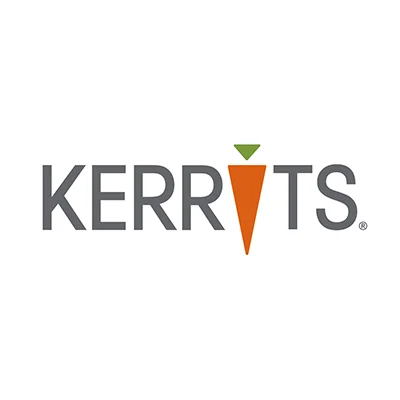
Case study
Kerrits needed an email marketing solution to handle its expanding business and diverse customer base.
The brand switched from its parent company’s email management to Omnisend.
Omnisend’s automation features drove higher revenue for Kerrits, with 23% of email sales generated from automated messages.
Read the whole case study
6. Walking pads (under desk treadmill)
Market size: $125.6 million in 2023 (global)
Item price range: $200 – $500+
Approximate net profit margin: 20 – 50%
Walking pads are compact treadmills that fit beneath a standing desk. They allow users to walk at a slow and steady pace while working, thereby promoting light exercise. Prices for under-desk treadmills can range from a few hundred dollars to over $500, depending on the features.
The profitability of selling under-desk treadmills online is quite attractive at up to approximately 50%. The report by imarc estimated the global market size for this product to reach $125.6 million in 2023 and is expected to reach $194.2 million by 2032.
This growing demand is due to the rise in remote and hybrid work arrangements. As such, more and more people are seeking ways to integrate physical activity into their daily routines.
Pros
- Increasing demand, which presents a lucrative opportunity for online sellers
Cons
- Requires significant upfront investment
The Goplus foldable treadmill is an example of a product under this category. This product features a speed range of 0.6 – 8.6 MPH and is suitable for walking, light jogging, and running:
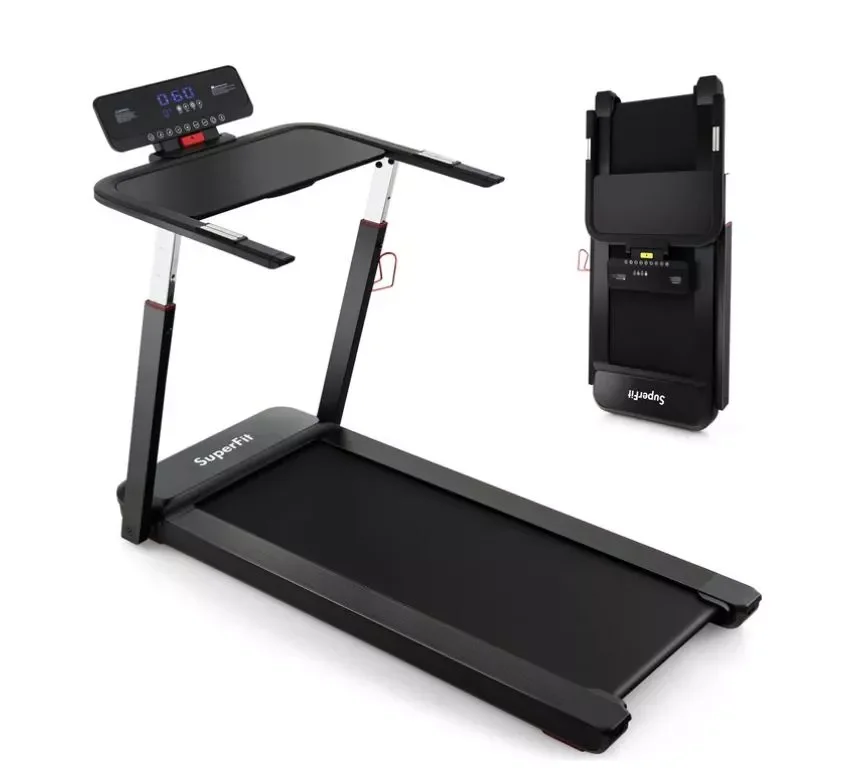
7. Luxury artisanal chocolates
Market size: $35.43 billion in 2023 (global)
Item price range: $2 – $10 per piece, $100 – $300+ for large boxes
Approximate net profit margin: 10 – 20%
These are high-end handcrafted confections made with premium ingredients. They often have unique flavor profiles, artistic designs, and luxurious packaging. Examples include single-origin chocolates, truffles, and chocolate bars infused with exotic spices or fruits.
Consumers are willing to pay a premium for healthier options like vegan chocolates, protein-rich chocolates and more. Therefore the opportunity for selling this product online is substantial. The global premium chocolate industry was valued at $35.43 billion in 2022 and is projected to reach $79.22 billion by 2032.
Pros
- Increasing market demand
- Ability to reach a global audience
Cons
- These products are perishable, especially those with delicate fillings or coatings, which require careful shipping
An example is To’ak Chocolate Caramelized Pop Amaranth, which blends chocolate with ingredients like caramel and cacao butter:
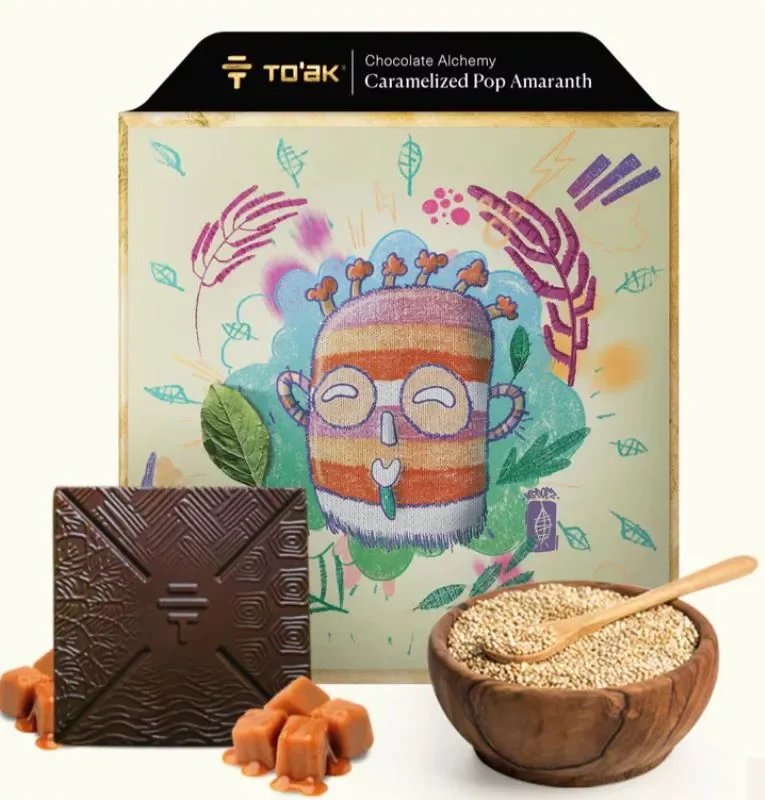
Case study
To’ak Chocolate faced challenges in amplifying its brand story and boosting sales through email marketing.
To address this, the brand partnered with Omnisend with a strategic focus on email marketing automation.
Email marketing now contributes a much larger percentage of total sales, marking a 460% increase over six months.
Read the whole case study
8. Healthy snacks
Market size: $95.61 billion in 2023 (global)
Item price range: $2 – $30 per item
Approximate net profit margin: 10 – 30%
Healthy snacks are nutritious alternatives to traditional snacks. They include products like granola bars, dried fruits, nut mixes, organic chocolate, and more.
According to Grand View Research, healthy snacks are a growing trend, with a global market valued at $95.61 billion in 2023. This figure is driven by a growing focus on health and wellness. People are looking for healthy options online more than ever before. By selling healthy snacks, you can tap into a large and growing customer base to make a profit. Industry studies suggest that healthy snack businesses see profit margins as high as 10% to 30%.
Pros
- Easy to ship and store
- Broad target audience, including all age groups
- A wide range of items available
Cons
- Risk of product damage or spoilage during shipping
Clif Bar’s Organic Butter Bar is a popular example of a healthy snack that combines taste and nutrition. This bar is made with organic ingredients and is free from artificial preservatives and flavors:
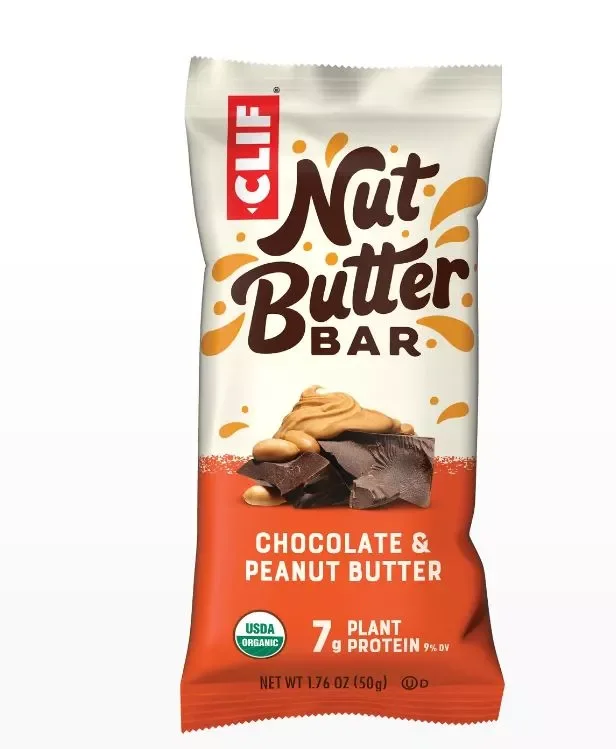
9. Food packaging
Market size: $479.73 billion in 2023 (global)
Item price range: $0.50 – $20+ per unit
Approximate net profit margin: 5 – 20%
Food packaging keeps food fresh, protects it from damage, and provides information about the food. It comes in various forms, from resealable pouches for snacks to microwavable meal containers.
The online sales of food packaging products can be profitable due to their consistent demand. Industry trends show that the global food packaging market size is expected to reach $808.40 billion by 2032, indicating a robust growth trend.
Pros
- Increasing demand for packaging as the food industry constantly grows
- Easily scale your business by adding new products or increasing inventory
- Low overhead costs associated with an online business model can translate to higher profit margins
Cons
- Requires compliance with food safety and environmental regulations
For example, Stasher Bags offer a reusable and eco-friendly alternative to single-use plastic bags. These silicone bags are perfect for storing snacks, meal prepping, and even cooking. They’re durable, dishwasher-safe, and come in various sizes and colors:

10. Vegan ethical clothing
Market size: $594 billion in 2023 (global)
Item price range: $30 – $300+
Approximate net profit margin: 25 – 30%
This is a category of fashion that prioritizes environmental sustainability throughout the production process. This means using vegan materials, such as organic cotton, recycled polyester, and Tencel.
Vegan ethical clothing often commands premium prices due to the higher-quality materials and production standards used. This can provide healthy profit margins. The global market size of this clothing category is forecasted to reach $989 billion by 2027. You can cater to a global audience of environmentally conscious consumers comfortable shopping online.
Additionally, the average net profit margin in the vegan fashion industry ranges from 25% to 30%. This is due to the premium pricing and growing consumer willingness to pay more for sustainable fashion.
Pros
- Potential for premium pricing and healthy profit margins
- Strong alignment with values of sustainability and ethics
Cons
- Higher production costs compared to conventional clothing
- Finding reliable, ethical suppliers can be challenging
Stella McCartney’s Vegan Leather Jacket is a prime example of high-quality vegan ethical clothing. Made from innovative, animal-free materials, this jacket offers a chic and sustainable alternative to traditional leather:
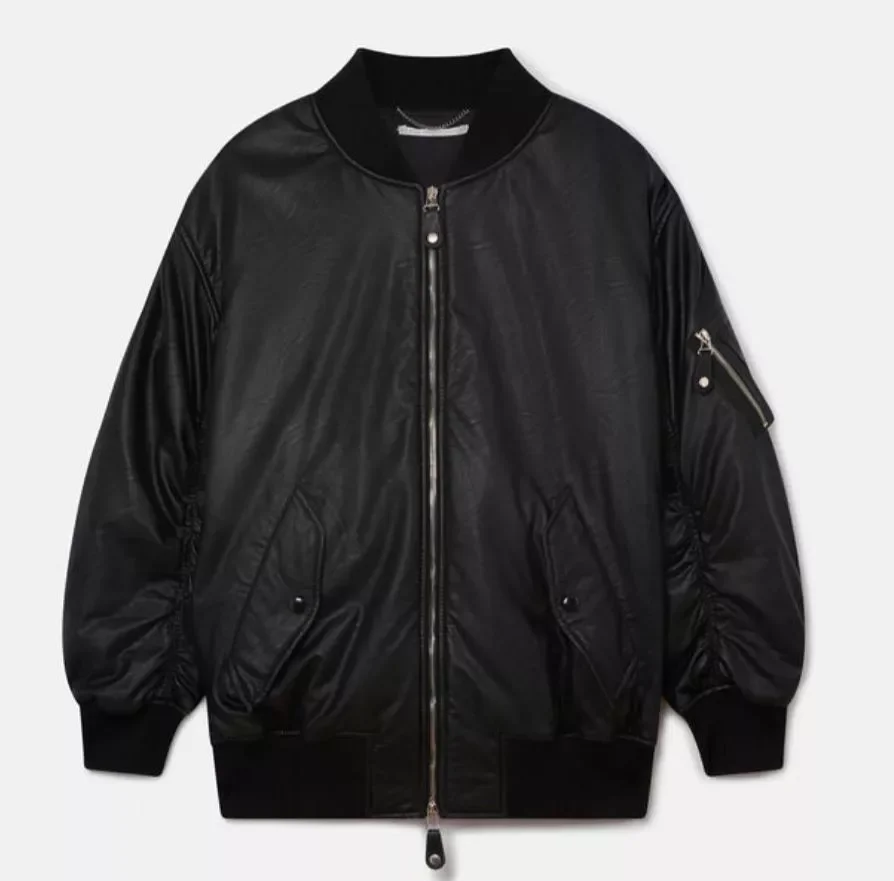
Related:
How to start an online clothing store in 2024: Complete guide
11. Baby apparel
Market size: $64.64 billion in 2023 (global)
Item price range: $10 – $150+ per item
Approximate net profit margin: 10 – 40%
This encompasses clothing items designed specifically for infants and toddlers, including bodysuits, rompers, pajamas, and outerwear.
Baby apparel is a booming market segment within the vast industry of baby products. In 2023, the size of the global baby apparel market was estimated to be $64.64 billion. By 2032, it’s projected to reach $108.36 billion.
The market is driven by growing birth rates globally and increasing consumer preference for stylish clothing for children. With this product, you can achieve substantial gross profits, with margins often exceeding 30% after factoring in production and marketing costs.
Pros
- Generally small and lightweight, making them easier to store compared to bulkier items
- Parents are always looking for cute and comfortable clothes for their babies, creating a consistent demand
Cons
- Managing returns and exchange, including shipping costs and restocking fees, can be time-consuming and costly
One example of a successful baby apparel brand is Gerber Childrenswear LLC. The company launched its “Gerber Modern Moments” line, which features organic cotton baby clothing to meet the growing demand for eco-friendly options:
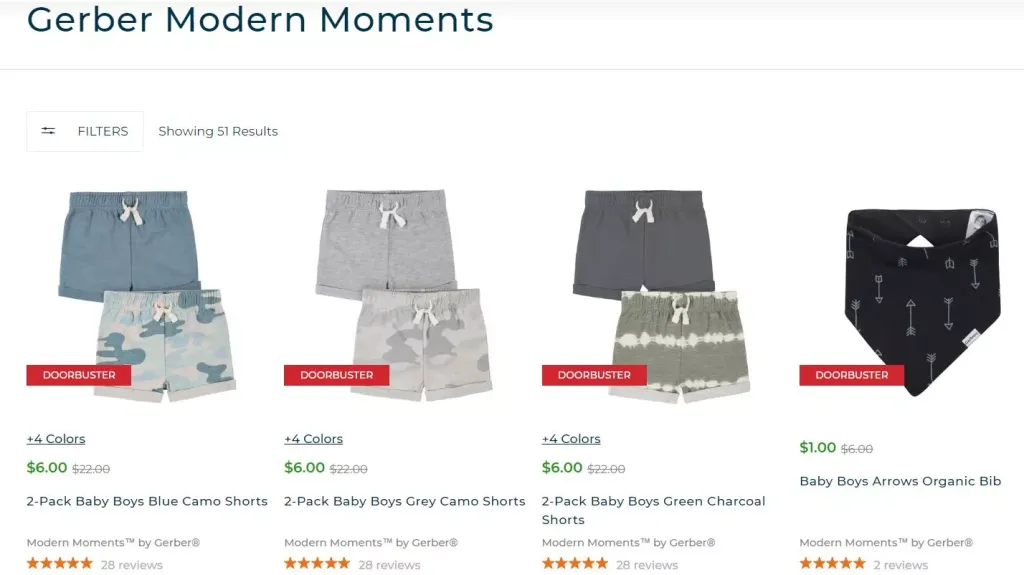
12. Eco-friendly toys
Market size: $22.47 billion in 2023 (global)
Item price range: $25 – $100+
Approximate net profit margin: 10 – 25%
Eco-friendly toys are products made from sustainable materials and using an environmentally friendly process. This can include using recycled and organic materials and non-toxic paints and dyes. These toys avoid harmful chemicals that parents are becoming more aware of and processes that can damage the environment.
Consumers are willing to pay a premium for sustainable products, resulting in better profit margins. Also, the sustainable toys market is expected to grow at a CAGR of 12.7% from 2023 to reach $51.89 billion by 2030. This indicates a promising outlook for businesses in this sector.
Pros
- The market for sustainable products is growing, providing a large customer base
- Selling eco-friendly toys contributes positively to the environment
Cons
- Production costs are higher due to sustainable materials
One example of a popular eco-friendly toy is the Green Toys Recycled Plastic Tugboat. It’s made from 100% recycled plastic milk jugs. The toy is designed for children aged six months and above to encourage imaginative play and water exploration:
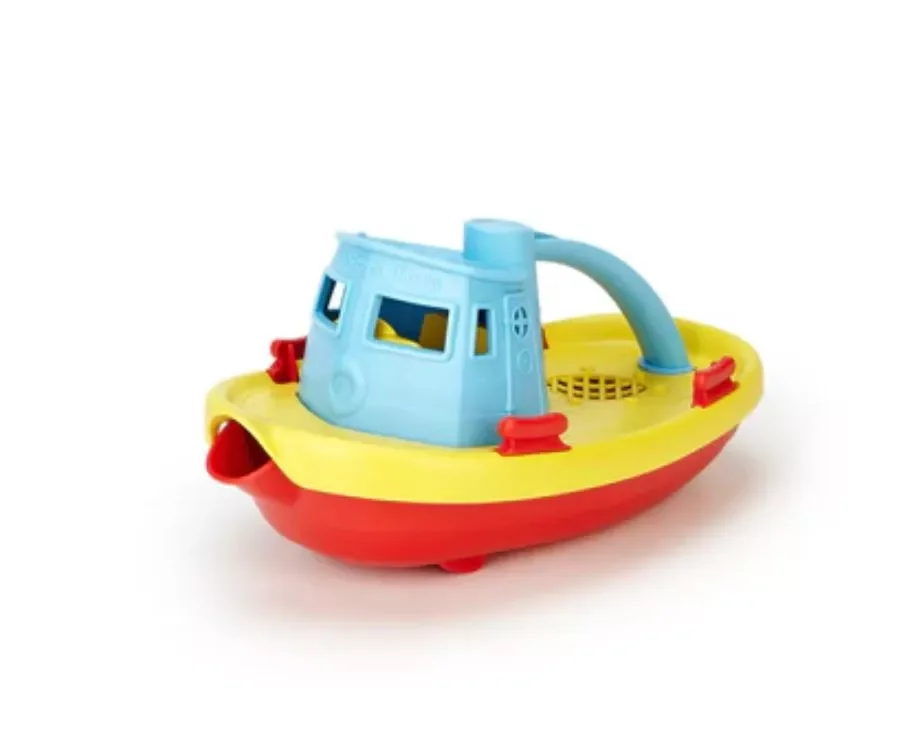
13. Specialty coffee
Market size: $24.28 billion in 2023 (global)
Item price range: $18- 39 per pound
Approximate net profit margin: 69%
Specialty coffee is a high-quality coffee that scores 80 points or above on a 100-point scale and adheres to strict standards set by the Specialty Coffee Association. It’s distinguished by its exceptional quality, unique flavor profiles, and ethical production practices and represents a unique niche within the vast coffee market.
The profit margins in the specialty coffee industry are quite favorable. According to Grand View Research, the global specialty coffee market size was estimated at $21,916.2 million in 2022 and is expected to grow at a CAGR of 11.3% from 2023 to 2030. This is due to the relatively low cost of the coffee beans compared to the final retail price.
Pros
- Coffee is a consumable good that people tend to buy regularly
- The product commands a high price point, which can offer better profit margins
Cons
- Requires knowledge of coffee sourcing and roasting
- Potentially higher initial investment in quality control and marketing
One notable example in the specialty coffee category is the Panama Geisha coffee. This rare and highly sought-after coffee variety is known for its extraordinary flavor profile. It features flavors like jasmine, tropical fruit, and bergamot notes:
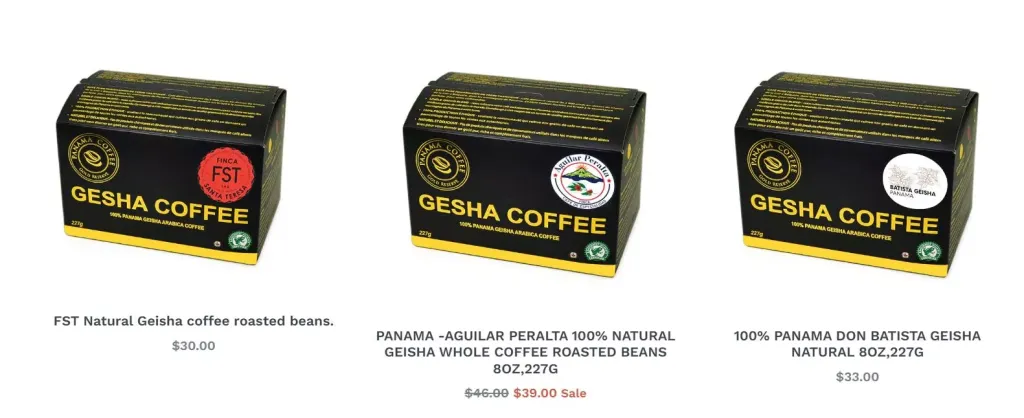
14. Non-alcoholic drinks
Market size: $1,224 billion in 2023 (global)
Item price range: $20 – $300+ per liter
Approximate net profit margin: 13.58%
This product category involves beverages that contain minimal to no alcohol. These include soft drinks, juices, energy drinks, bottled water, coffee, tea, and even non-alcoholic beer.
Non-alcoholic drinks cater to a wide audience, including teens, adults, the working class, students, and others. Selling non-alcoholic drinks online is a lucrative choice due to the industry’s booming growth.
According to Precedence Research, the global non-alcoholic beverage market is expected to reach $2,508 billion by 2033. With high demand and diverse product options, online retailers can achieve significant gross profit margins.
Pros
- Steady and growing consumer interest
- Ability to cater to various tastes and dietary preferences
- Potential for consistent revenue streams
Cons
- You need to adhere to food and beverage regulations, which adds another step to selling these products, making the process more time-consuming
Seedlip non-alcoholic spirit is one of the pioneers in the non-alcoholic drink market. The product is distilled in a similar manner to traditional spirits but contains no alcohol. It comes in different flavors, such as Spice 94, Garden 108, and Grove 42, each with a blend of unique botanicals:

15. Olive oils
Market size: $15.11 billion in 2023 (global)
Item price range: $100 – $500+ per kilogram
Approximate net profit margin: 10 – 40%, depending on the production scale
Olive oil has been a staple in kitchens around the world. It’s known for its health benefits, exquisite flavor, and versatility. Olive oil is a natural oil extracted from pressed olives, which is the fruit of the olive tree. The oil comes in various types, including extra virgin olive oil, virgin olive oil, and refined olive oil, each with different qualities and flavors.
This oil can be a profitable online product because it has lots of different people. The global olive oil market is massive, estimated to reach $21.32 billion by 2033. People seeking gourmet ingredients appreciate premium olive oil, while health-focused consumers opt for its nutritional value.
Pros
- Olive oil is used in various culinary applications, from cooking and frying to dressing salads and dipping bread. Its versatility can ensure consistent demand
- Olive oil has a long shelf life, reducing risks associated with perishable goods
Cons
- Has a competitive market
One example of a successful olive oil product in the online market is Island olive oil. The product features unique flavor profiles and high antioxidant content:
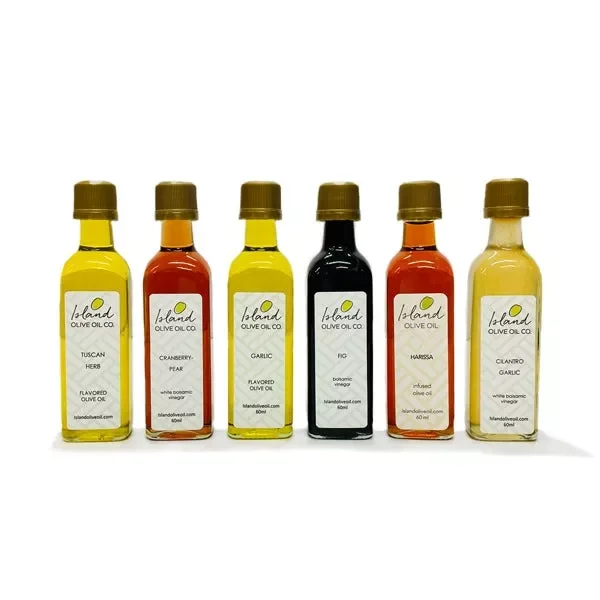
Case study
Island Olive Oil Company wanted to improve its ecommerce game while maintaining a customer-centric vibe.
It partnered with Omnisend to set up automated messages for its welcome series and abandoned cart series.
These automations generated 39% of marketing email revenue and paid for itself in about eight months.
Read case study
16. Hair wigs and extensions
Market size: $7.10 billion in 2023 (global)
Item price range: $10 – $10,000
Approximate net profit margin: 30 – 50%
Hair wigs and extensions come in various styles, colors, and lengths to cater to diverse consumer preferences. Examples include clip-in extensions, sew-in weaves, lace-front wigs, and full lace wigs.
Consumers seek these products for special occasions, daily wear, or addressing hair loss. Also, trends in fashion and beauty tend to influence the demand for hair wigs and extensions. As celebrities promote various hairstyles, customers often seek to emulate these looks.
This high demand leads to an increase in market size. The global hair extensions market is estimated to reach a value of $10.56 billion in 2032.
Pros
- The profit margins can be quite substantial due to the ability to set competitive retail prices
- The business can be easily scaled to reach a wider customer base as demands grow
- Wigs and extensions require periodic replacements, which can enable repeat business
Cons
- The market is saturated with competitors, so you need to build a strong brand identity
Divatress human hair wigs are one of the most sought-after products in this category. They’re made from 100% human hair and come in different lengths and colors:
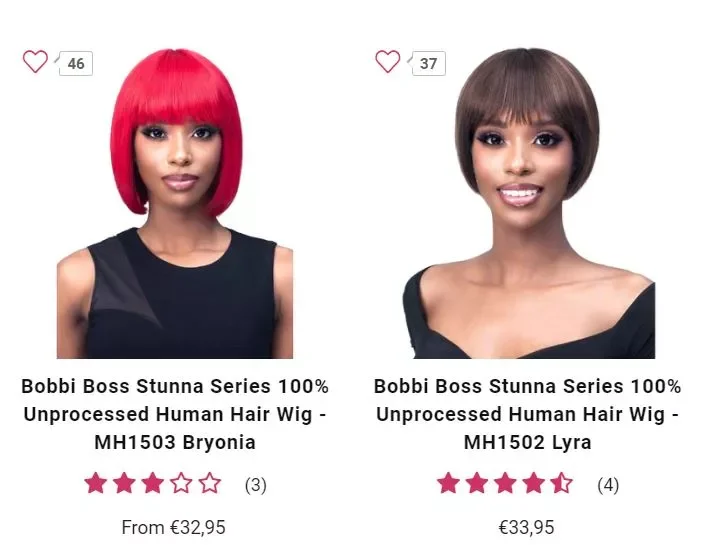
Case study
Divatress, a company that sells hair care products online, saw a 20% year-over-year business growth after using Omnisend.
It achieved this by using SMS marketing and email automations.
SMS campaigns drove $123,000 in sales over the first year.
The abandoned cart workflow converted at a 29% rate, accounting for 28% of all platform-generated revenue.
Read case study
17. Travel gears and accessories
Market size: $48.2 billion in 2021 (global)
Item price range: $50 – $1,500+
Approximate net profit margin: 5 – 25%
This product category includes various items that enhance every stage of the travel experience. Items include luggages, tech accessories, travel apparel, organizational tools, and much more. Several factors make this a compelling product category to venture into.
Firstly, the travel industry is booming, with more people traveling for both leisure and business. The market for travel accessories, which was worth $48.2 billion in 2021, is expected to rise to $95.7 billion by 2031. This translates to a constant demand for products that support this growing market. Also, the wide variety within the category allows you to cater to different budgets and demographics.
Pros
- Ample room for creating innovative and improved products
- A steady demand due to the growing travel industry
- The versatility of the products allows for targeting various market segments
Cons
- Sales can be affected by seasonal changes and travel trends
One example of a profitable travel accessory is the Monos Carry-On Pro Plus. It’s a high-end, stylish carry-on suitcase designed for modern travelers:

18. Hybrid and electric bikes
Market size: $6.5 billion in 2023 (US)
Item price range: $750 – $4,000 (basic), $5,000 – $10,000+ (high-end and customized)
Approximate net profit margin: 10 – 25%
Hybrid and electric bikes are an evolution in the cycling industry. It blends traditional biking with advanced technology to meet modern transportation needs. These bikes feature a comfortable riding position, medium-width tires, and a wide range of gears. This makes them suitable for commuting, leisure rides, and light off-road cycling.
The bicycle market in the US is projected to reach $9.5 billion by 2027, fueled by rising fuel costs and environmental concerns. Also, with a growing emphasis on health and fitness, more individuals are turning to cycling as a means to stay active.
Pros
- Online stores can offer several models and brands compared to physical stores due to space constraints
- Cross-selling opportunities for accessories, spare parts, and maintenance services
Cons
- Delivering large and heavy items like bikes can be challenging and costly
The Rad Power Bikes RadRover is a standout example in this product category. This fat-tire e-bike is capable of handling various terrains, from city streets to rugged trails:
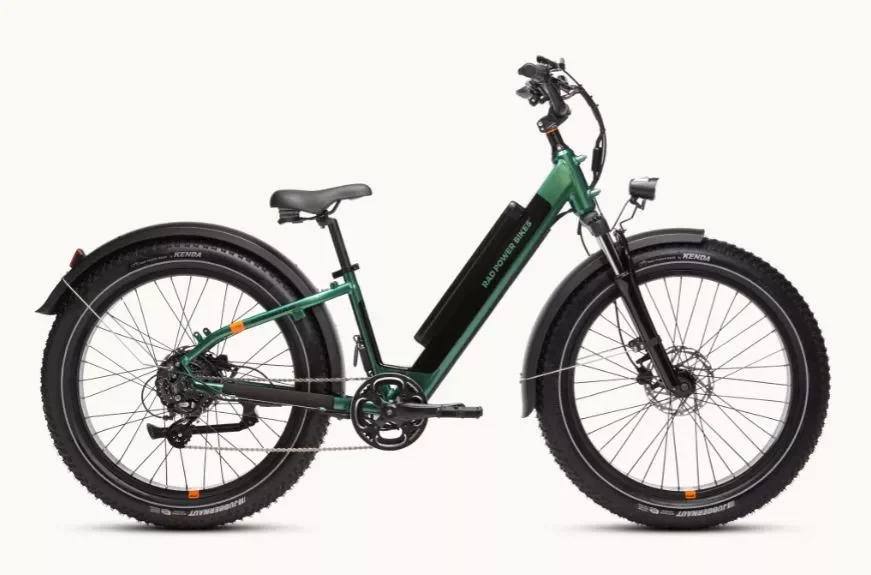
19. Home office furniture
Market size: $22.42 billion in 2024 (global)
Item price range: $200 – $1,000+
Approximate net profit margin: 5 – 15%
This product includes furniture pieces designed to create a productive and comfortable work environment in a residential setting. Some examples include desks, office chairs, and storage and lighting solutions.
The rise of remote work has created a steady demand for well-designed home office furniture. The global market size is currently at $22.42 billion and is estimated to reach $30.25 by 2029.
Many home office furniture items can be customized to meet individual preferences and needs. Customization options, such as different finishes, materials, and sizes, can allow for premium pricing and offer appealing profit margins.
Pros
- The increasing number of remote and hybrid workers ensures a steady demand for home office furniture
- Home furniture has high profit margins, especially when offering premium or customized options
Cons
- Many home office furniture items require assembly, which can be a hassle for customers and lead to potential damage
A prime example of a home office furniture product is the Herman Miller Aeron Chair. This product features adjustable lumbar support and customizable settings to accommodate various sitting preferences:

20. Sleep products
Market size: $63.98 billion in 2023 (global)
Item price range: $20 – $300+
Approximate net profit margin: 8 – 15%
Sleep products include items to enhance the quality of sleep and address various sleep-related issues. This can be mattresses, pillows, sleep masks, white noise machines, weighted blankets, essential oils for aromatherapy, and more.
Sleep products can be profitable due to their large target market. The global sleep product market size is projected to keep expanding in the coming years, growing from $63.98 billion in 2023 to $108.21 billion in 2032. This is because people are willing to invest in quality sleep solutions for improved health and well-being.
Pros
- Large and growing target market
- High profit margins due to premium pricing
Cons
- The sleep product market attracts numerous competitors, making it challenging to stand out
Eight Sleep’s Pod is an excellent example of a sleep product that uses technology to gain a profitable edge. This smart mattress features biometric tracking and personalized coaching to optimize sleep quality.

21. Car care products
Market size: $4.4 billion in 2022 (global)
Item price range: $5 – $150+
Approximate net profit margin: 5 – 15%
This product category includes car cleaning supplies, such as car washes and waxes. It also includes more specialized items like tire shine, upholstery cleaners, and engine degreasers. Car care products are essential for vehicle maintenance and appeal.
Several factors contribute to the enduring profitability of car care products. The car market is growing, driven by factors like rising disposable income and urbanization. Market reports estimate that the global market size will reach $4.8 billion by 2027. Car care products are consumables. Soaps, waxes, and cleaners need to be replenished regularly, creating a consistent demand stream.
Pros
- Vehicles require regular maintenance, ensuring a steady demand for these products
- Many car care products have relatively low production costs compared to their retail prices, resulting in high profit margins
Cons
- Car care products may be subject to strict safety regulations, which can increase compliance costs
One standout product is Meguiar’s Ultimate Liquid Wax. This product is formulated with advanced synthetic polymers. It’s a premium carnauba-based wax that provides long-lasting shine, protection, and water beading:

Summary
Entering the online marketplace can be challenging, particularly when it comes to selecting the best products to sell. However, by considering factors like problem-solving capabilities, profit margins, market demand, and scalability, you can make informed decisions about which products to sell to drive huge profits.
We’ve included a comprehensive list of 20+ lucrative things to sell online in 2024 to give you an idea. The product categories featured in this article are supported by consumer trends and market data.
However, they represent just a glimpse of the vast opportunities available in today’s online market. Don’t be afraid to venture outside this list.
Finding and selling the most profitable products online is filled with opportunities and challenges. Stay informed, adapt to market changes, and continually strive to meet the needs of customers’.
Source from Omnisend
Disclaimer: The information set forth above is provided by omnisend.com independently of Alibaba.com. Alibaba.com makes no representation and warranties as to the quality and reliability of the seller and products. Alibaba.com expressly disclaims any liability for breaches pertaining to the copyright of content.







